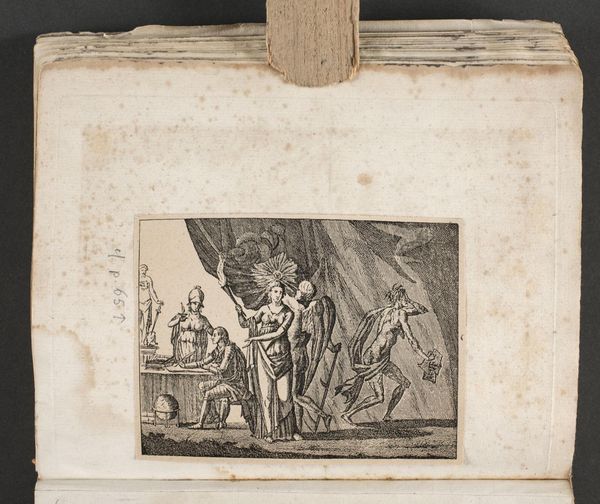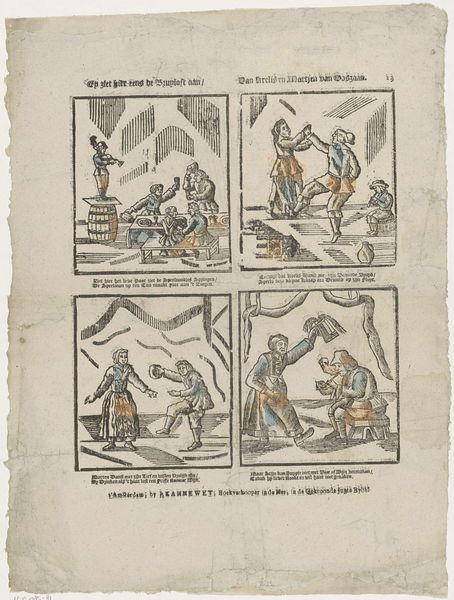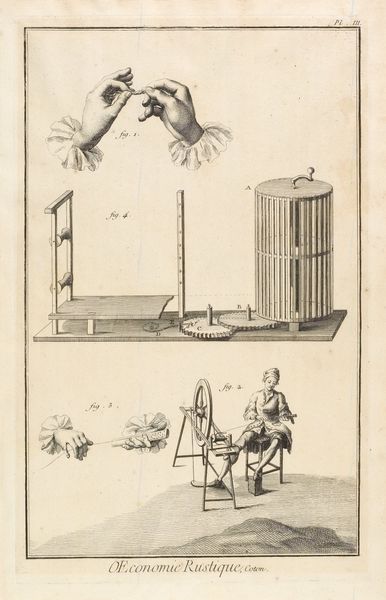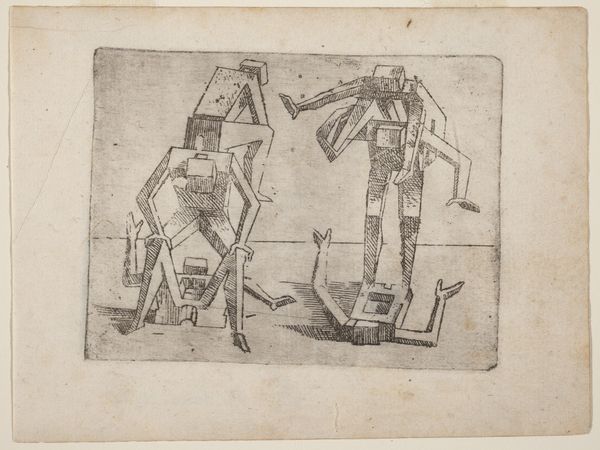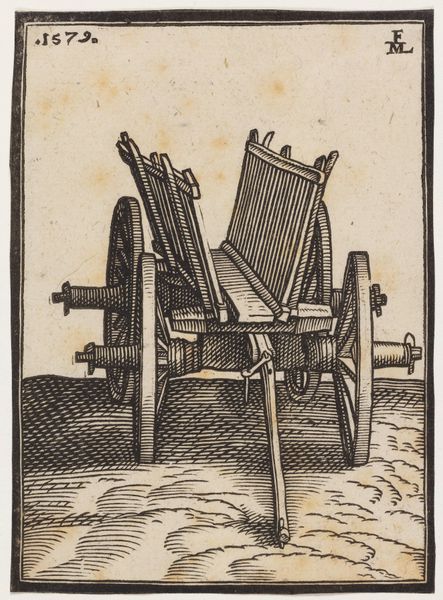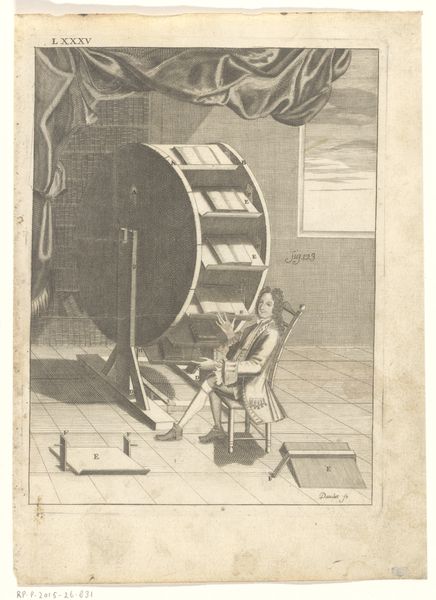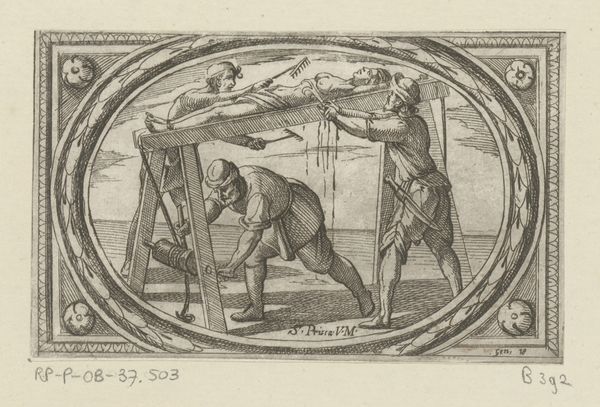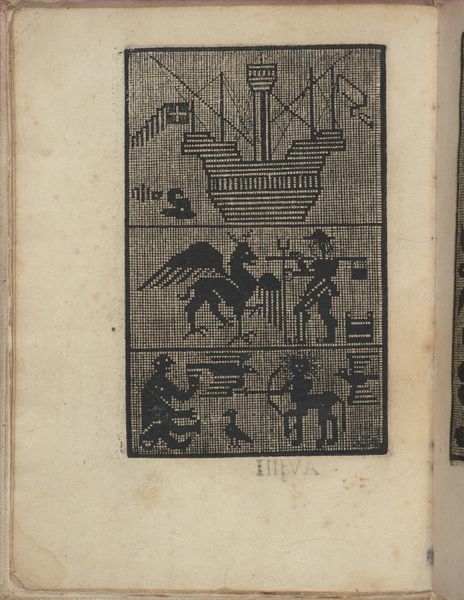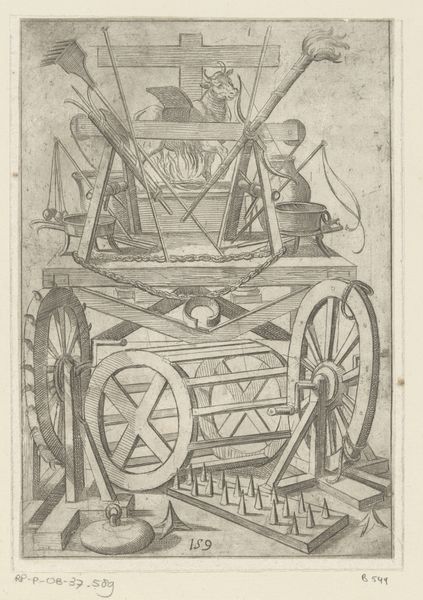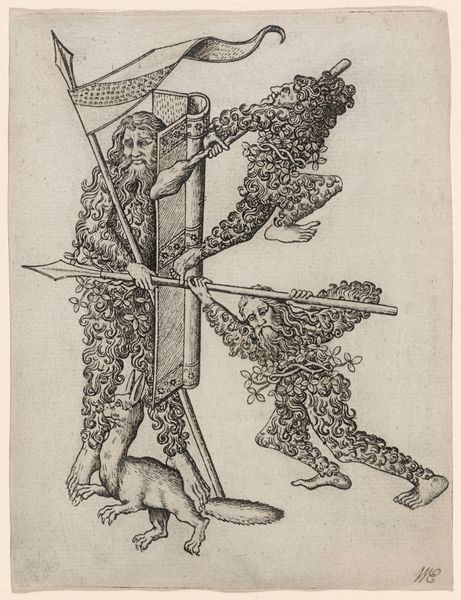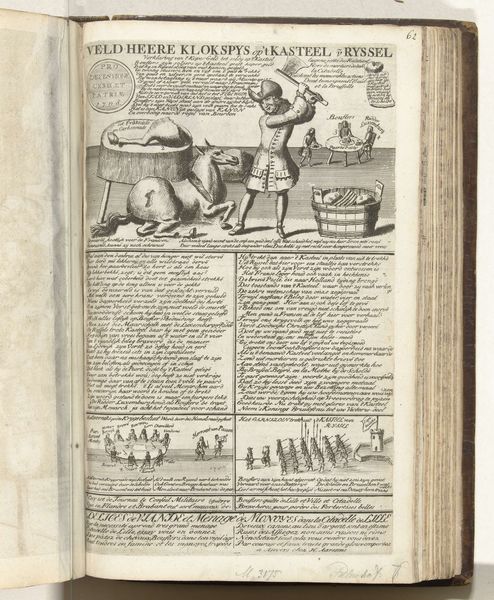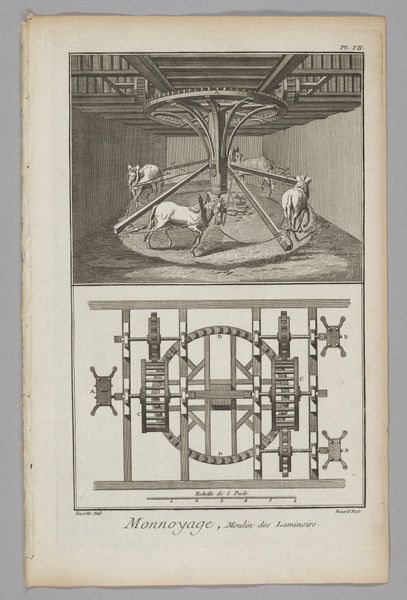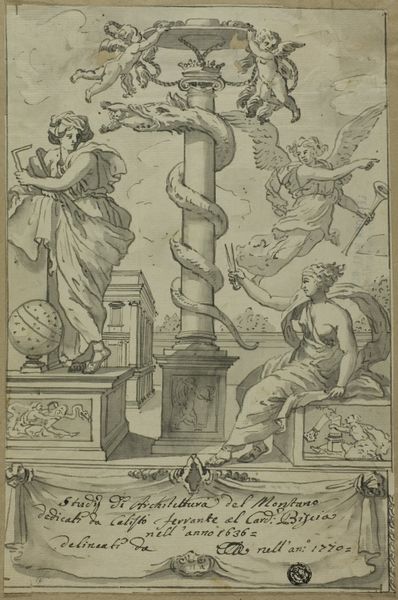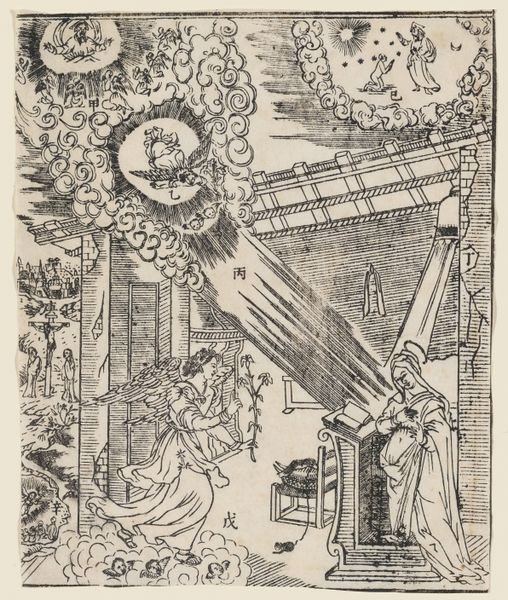
Blackwork Ornament with Two Sawing Men in a Sketchbook with 131 Prints 1619
0:00
0:00
drawing, print, engraving
#
drawing
#
narrative-art
# print
#
figuration
#
11_renaissance
#
northern-renaissance
#
engraving
Dimensions: height 106 mm, width 78 mm
Copyright: Rijks Museum: Open Domain
Curator: Oh, what an intriguing find. This is a page from a sketchbook dated to 1619. The complete book is titled "Blackwork Ornament with Two Sawing Men in a Sketchbook with 131 Prints." Editor: My first thought is... slightly absurd, isn't it? I mean, those sawing men! The contraption itself is so ornately decorated, like some precious, over-engineered toy. And is that a massive cricket hovering? Curator: Exactly! That's what draws me in – the juxtaposition. You've got this incredibly detailed scene of manual labor, but the execution is, dare I say, almost whimsical. Jean Toutin's use of engraving creates a fascinating tension between the practical and the purely ornamental. Look at how he renders the textures, from the wood grain to the delicate floral patterns on the saw frame. Editor: Yes, the engraving is superb. Notice how Toutin’s technical skills are used to monumentalize a common trade like carpentry. Also note the men at work, elevated in a strange symbiosis as the fruits of their labor pour into a vessel at the center of this operation. What I love is the emphasis on this ornamental contraption that mediates their hard labor. We should also make the case that images like these were part of a vibrant print culture in the Northern Renaissance, which really spurred circulation of aesthetic and technological ideas in workshops. Curator: Absolutely. It’s as though labor itself has been elevated to a form of art. I keep circling back to that cricket, though. It is such an odd element; it could be a symbol of… well, who knows? The impermanence of things? A pesky annoyance in the otherwise diligent process of craftsmanship? It makes you wonder about the intention. Editor: Right? And in many ways, this speaks to your earlier comment of whimsy; but whimsy has concrete ends! A printed engraving for sale serves material and social goals to disseminate aesthetics and possibly techniques as commodities. Its art status makes the final piece more attractive in ways that the two sawing men will not. Curator: So well said. It really showcases the genius of the artist in capturing what is so simple with so much complexity. What a moment. Editor: This pushes us to see value in the often under-examined elements and relations of the material world. Definitely intriguing!
Comments
rijksmuseum about 2 years ago
⋮
This sketchbook contains 131 biblical scenes and ornament prints, including this imaginative, amusing example by the Parisian enamellist Jean Toutin. The collection was probably assembled in France by a Dutch youngster. In childlike handwriting the owner noted that he or she composed the booklet commemorating the fact ‘that I came to live here on 24 January 1633.’
Join the conversation
Join millions of artists and users on Artera today and experience the ultimate creative platform.
